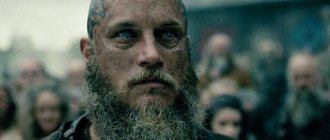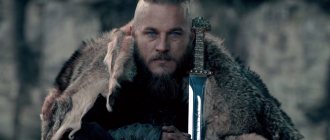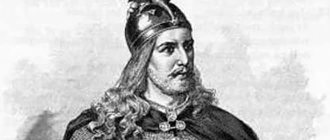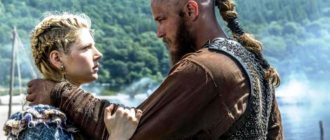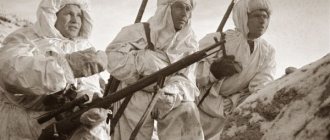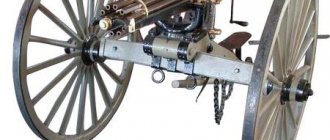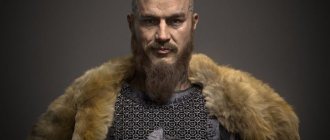This is possible considering that in the fourth season of the last episode of the Vikings series, Ragnar Lothbrok (played by Travis Fimmel) was supposedly killed. Viewers saw how the main character Ragnar was thrown into a pit with poisonous snakes by his enemies.
There is a chance that this is one of the tricks that makes us look forward to the release of season 5 of the historical series “Vikings”. This may be presented as a vision or a dream.
After all, his brother Rollo (Clive Standen) made a surprise appearance in the latest series of Vikings in episode 10, "Moments of Sight."
The creator of the Vikings series, Michael Hirst, has already hinted that Rollo is going on a trip and perhaps he will meet his brother.
In an interview, the writer said: “The viewer must understand why he returned. He returned for a reason that carries over into the first season of the series. There are unresolved issues in his life with his brother and Lagertha that he still wants to resolve."
History of creation
There is no convincing evidence that such a person actually existed in history. Therefore, there is no reliable biography or information like the years of Ragnar’s life. It is only known that this king was allegedly executed in 865.
What is known about Ragnar is known from the sagas, and the sagas cannot be considered a reliable source. Ragnar could have been an influential military leader who lived and acted in Denmark in the first half of the 9th century, carrying out raids and engaging in maritime robbery.
Ragnar Lothbrok in prison
Ragnar allegedly received the nickname “Leather Pants” because his wife sewed specific leather pants for the hero, which he wore as an amulet. Or because in his youth the hero fell into a den of snakes, but remained alive thanks to strong leather pants that the snakes could not bite through.
The sagas attribute to Ragnar a significant achievement - the capture of Paris, which occurred on Easter 845. It is assumed that Ragnar was followed by 5,000 warriors on 120 ships, who ascended the Seine and captured the city. King Charles the Bald allegedly paid Ragnar a huge ransom so that the Viking would leave the city untouched - 7,000 pounds in silver. The hero did not destroy Paris, but did not deny himself the pleasure of ruining and plundering the surrounding area on the way back through the lands of northern France.
It is unknown when Ragnar was born, but the culprit in the death of the legendary Viking was King Ella II of Northumbria. The Viking ship ran aground in the lands of this king, the Vikings themselves were defeated, and the leader Ragnar was thrown into a pit with poisonous snakes, where he died. It is unknown where the hero is buried.
Ragnar Lothbrok's hairstyle
According to the sagas, Ragnar Leatherpants had more than a dozen sons, legitimate and illegitimate. More than shown in the Vikings series, so the hero’s family tree is sprawling. These sons united to avenge their father's death and invaded Britain in 867. This is how the sagas describe the beginning of the Danish conquest of England. Ragnar's descendants executed King Aella of Northumbria and plundered many lands until the Viking army was defeated by the historical king of Wessex, Alfred the Great, in 878.
The more women the better
Historiography says that Ragnar married three times. Lagertha's wives, Thora and Aslaug, bore him nine children, with five more by unnamed women mentioned in the sagas.
Researchers have come to the conclusion that the number of bastards of Ragnar Lothbrok cannot be accurately counted - at one time, “joining” the great family was a rule of good manners for many warriors.
Of the sons of Ragnar, three gained the greatest fame - Ivar the Boneless, who subjugated English Northumbria, Bjorn Ironside, who plundered the coast of Morocco, and Sigurd Snake-Eyes. All of them bore the titles of kings.
"Vikings"
Ragnar Lothbrok as a film character is known to viewers from the historical series “Vikings”, the first season of which was released in 2013. The plot of the series is based on Scandinavian sagas, but this project cannot be called strictly historical. Rather, it paints a spectacular and vivid historical picture of the early Middle Ages, when the Vikings raided Britain and the lands of the Franks. Details like Ragnar’s eyes shining with blue light, a tattoo on his head, “fashionable” hairstyles and “outfits” of Vikings are the imagination of the creators of the series.
Eyes of Ragnar Lothbrok
The main character of the series, Ragnar Lothbrok, cannot be called a real character. There is no evidence that such a person was actually born. Ragnar is a legendary Viking leader who allegedly descends from the all-father Odin. The series also features Ragnar's spouses - the warrior Lagertha and the cunning queen Aslaug, as well as the hero's comrades, friends and numerous sons.
In the first season, the hero begins as a simple bond (a free landowner) and gradually rises to the heights of power. Ragnar asks the shipbuilder Floki, his faithful friend, to build a fast ship on which he could reach a new land where a Viking has never set foot before - England. Together with his blood brother Rollo and his team, Ragnar goes on a raid against the will of the local jarl.
Floki
On the island of Lindisfarne, the Vikings rob a monastery, from where they take away a lot of property and the captive Christian monk Athelstan. Later, when the earl takes the loot from Ragnar, the hero will demand that Athelstan be given to him, and this will be the beginning of a great friendship. At the end of the season, Ragnar will become a jarl, having killed the previous one in a duel, and at the same time he will meet Aslaug, the future second wife, who will stand between Ragnar and the warrior Lagertha.
In the second season, Lagertha and Bjorn, Ragnar's only son from his first wife, leave the hero due to Lagertha's jealousy of Aslaug. From his marriage to Aslaug, Ragnar would have four sons - Ubba, Hvitserk, Sigurd Snake-Eyes and Ivar the Boneless. Among all Ragnar's children, Ivar is the only one who did not become a mighty warrior, because he was born crippled and could not walk.
Sons of Ragnar Lothbrok
Ragnar in the second season continues to raid Britain and becomes king at home, in Kattegat. The British kingdoms drag the Vikings into their own internal struggles. Ragnar is going to expand his expansion and is planning a march on Paris, the richest city of the Franks. Meanwhile, the deceitful King Egbert, with whom Ragnar entered into an alliance, destroys the Viking settlement in British lands.
The Vikings manage to capture Paris, where Ragnar takes a large tribute and returns to his North. Ragnar's brother Rollo remains in Paris and joins the Franks.
Rollo and Ragnar Lothbrok
During the Battle of Paris, Ragnar receives severe wounds from which he cannot recover, and in the fourth season, Ragnar's eldest son, Bjorn, takes control of Kattegat.
In the fourth season, another historical character appears, this time not a legendary one, but a real one - King Harald Fairhair, the unifier of the lands and the first king of Norway. Together with him, King Ragnar plans a new campaign against Paris.
In Paris, Ragnar has to face his own brother Rollo, who has been “reforged” and become a Frankish duke. Rollo is well aware of the Viking tactics, and Ragnar fails to take the city this time. The hero retreats with heavy losses and loses authority among his fellow tribesmen.
Ragnar Lothbrok Tattoos
In the finale of the fourth season, viewers see the grown-up sons of Ragnar, and the hero himself has managed to grow old. In the end, Ragnar dies on British soil, going on a campaign with his youngest son Ivar to avenge his relatives killed on the orders of Egbert. After the death of their father, Ragnar's sons lead a huge army to Britain and deal with their enemies.
Paris Campaign
Ragnar Lothbrok managed to enter the legends not as a result of his polygony or kinship with the deities. It is generally accepted that he was in awe of the possibility that his descendants would be able to surpass all his successes. In an effort to prevent this, he became involved in a wide variety of adventures and adventurous trips. Thanks to this, he managed to earn fame, glory and reputation. He was known as an experienced navigator and a skilled warrior.
Therefore, when in 845 Ragnar turned his attention to the West Frankish kingdom, they decided to support him with up to five thousand Viking warriors. Approximately one hundred and fifty Drakars, together with powerful northern warriors, left the Danish coast. Together they set off in search of glory and riches in the Frankish lands.
Having reached the French coast, the troops split in half. Ragnar's army went to the Seine, and the warriors of his devoted friend Hasting went towards the Loire. Leaving behind destroyed temples, burned villages and piles of corpses, the two armies united on the way to Paris.
The Frankish ruler Charles II the Bald wanted to fool the attacking side of the northerners. He divided his troops and positioned them on both banks of the Seine River. However, Charles II was poorly prepared for defense. He did not provide for differences in the width of the river. So, at the moment one half of the French troops took the main blow, the other could not help and simply watched the carnage.
Having defeated the enemies on one bank, Lodbrok ordered the execution by hanging of more than a hundred captured French on a small island in the middle of the Seine. The troops located on the opposite bank immediately fled when they saw this terrifying sight. On March 28, Ragnar Lothbrok managed to enter Paris as a winner. As soon as he received his well-deserved payoff, he immediately returned home. However, this was not enough for him. After some time, he returned again and destroyed all the villages along the banks in the lowlands of the Seine.
According to some historians, the fall of Paris did not occur thanks to Ragnar's leadership talents, it was a happy accident. The French of that time knew how to fight just like the northerners, it was just that during the Viking aggression, France was bled dry by internecine wars. Then the three sons of Louis the Pious fought for the throne. And Charles II himself was not the best military leader.
Film adaptations
The image of Ragnar Lothbrok was twice portrayed in films. The first, in 1958, was the historical action film Vikings, where the role of King Ragnar was played by the American actor Ernest Borgnine. The script is based on Edison Marshall's novel "Viking", which in turn was written by the author based on the Scandinavian sagas.
Much later, in 2013, the Canadian-Irish historical series “Vikings” from British screenwriter and producer Michael Hirst began airing. In this series, the role of Ragnar Lothbrok is played by Australian actor Travis Fimmel. The fifth season of the series ended on January 24, 2018, and it is already known that the series has been renewed for a sixth season.
Actor Travis Fimmel
Travis Fimmel started his career as a model. The role of Ragnar Lothbrok brought the actor wide fame. And in 2016, Fimmel appeared on the screens in the film “Warcraft,” where he played the role of Lord Anduin Lothar, the commander-in-chief of the human kingdom and a close friend of the king.
Fimmel worked on the TV series Vikings for the first four seasons. Starting from the fifth season, the plot develops without the hero Fimmel, since at the end of the fourth season Ragnar dies.
Memory and recognition
Ragnar Lothbrok's Day is celebrated in the Scandinavian countries on March 28, because it was on this day in 845 that Ragnar's troops besieged Paris. On this day, a toast is made in honor of Ragnar and his Saga is read. However, the celebration of this day today in no way indicates an aggressive attitude or glorification of cruelty. On this day, Scandinavians pay tribute to their history.
The image of Ragnar Lothbrok can be found not only on the pages of Scandinavian sagas and chronicles. The legendary Viking is described in the novels “The Hammer and the Cross” by Harry Harrison, “Interstellar Wanderer” by Jack London, “Viking” by Edison Marshall and the novel of the same name by Alexander Mazin, “Two Kings” by Maria Semenova.
The image of the fearless Viking Ragnar is especially popular in video games - Crusader Kings II, the Civilization series Sid Meier's Civilization III: Play the World and Sid Meier's Civilization IV: Warlords, in the games Mount & Blade and Mount & Blade: Warband-Viking Conquest, and also Rune.
Today, the story of Ragnar Lothbrok, like other similar personalities, continues to live on. Moreover, this heritage continues to acquire legends and receives ever new interpretations. Numerous books, films, and computer games featuring semi-legendary characters continue the centuries-old tradition of myth-making, adding new colors and plot twists to existing stories, trying to look at their exploits from a different perspective.
Video
Quotes
“I want something that has no price in gold, but is priceless to me. I want to be baptized."
“Power is always dangerous. It attracts the worst and corrupts the best. I never asked for power. Power is given only to those who are willing to bend down to receive it.”
“Man is the master of his own destiny, not the gods. The gods are created by men to give answers that they themselves are too afraid to accept.”
“My heart believes that he will not betray me, there is no reason for that.
- Do you really need a reason for betrayal? You should always be prepared for the worst, even from your loved ones, then you can avoid many disappointments.”
Ragnar's Wives
Ragnar's loving disposition is as legendary as his victories on the battlefield. He had 3 official wives and many mistresses, both in his homeland and in the occupied lands.
Lagertha
In one of the battles, Ragnar saw that the warrior maiden Lagertha was fighting in the front ranks of his squad. The jarl wanted to make her his wife, but the proud maiden decided to teach her self-confident husband a lesson, leaving a bear and a huge dog at her door. The warrior hoped that the ferocious animals would tear the insolent man to pieces. But the man dealt with the living obstacle, melting the girl’s heart.
Interesting: Scandinavian legends tell of a tradition according to which a man who wanted to marry a warrior had to defeat her in a fair fight.
Lagertha bore Ragnar two daughters and a son, Fridleif. Her children left no traces and no history. After some time, the famous warrior decided to strengthen his position in the tribe, for which he divorced his first wife and remarried a more well-born maiden. There is a legend that Lagertha accompanied her ex-husband and fought alongside him on the Frankish campaign.
Torah from Gotland
Ragnar's second wife was Thora, the daughter of the Gotland jarl Harred. She bore him two sons, Eirik and Agnar. Shortly after the birth of her last child, the young woman fell ill and died. The children of Thor, as well as the children of the warrior Lagertha, are no longer mentioned in the Scandinavian sagas.
Aslaug
Ragnar entered into the longest and most prolific marriage with the beautiful Aslaug. According to legend, during one of his campaigns, Ragnar returned home for a short time, where his friends told him about a beautiful and wise maiden living in a poor hut with elderly relatives. Wanting to make sure that the rumor was true about the girl, the king ordered her to come to him, fulfilling three conditions:
- appear without clothes, but at the same time dressed;
- to be neither hungry nor full;
- have an escort, but do not bring people.
Soon Aslaug came to the noble warrior dressed in a fishing net and with her hair flowing, enveloping her figure like a cloak. She walked accompanied by a dog and ate onions, which suppressed the feeling of hunger, but could not completely satiate her.
The warrior liked the smart and beautiful woman, and he invited her to become his wife. But in response I heard a request to postpone the wedding ceremony until the end of his campaign. The groom returning from the raid asked Aslaug to share his bed with him, but was again refused and required to conduct an official ceremony first. Ragnar's young woman, who could foresee the future, knew that if there was intimacy between them on the night after the feast, then an unhappy fate awaited the son conceived that night. But the man, tired of waiting, did not listen to her. On this night Ivar the Boneless was conceived.
In addition to Ivar, Lodbrok had several more sons in his third legal marriage:
- Bjorn Ironside;
- Sigurd Snake-Eyes;
- Hvitserk.
In addition to children from his wives, the winner of the Franks had many bastards. Ubba, Uliv, and Halfdan took part in the campaigns next to their father.
Did Ragnar have a brother Rollo?
In the popular film adaptation, Ragnar Lothbrok has a brother named Rollo. The tall Viking accompanied his brother on many campaigns, but after the Frankish campaign their paths diverged.
In reality, the Scandinavian sagas do not mention a relative of the Danish king with that name. But a hundred years later, in the Scandinavian lands there lived a warrior named Rollo, who took the daughter of a Frankish king as his wife as a ransom. This man became the ruler of Normandy and lived to a ripe old age.
Unsafe Makeup
Real tough northern Vikings never take off their makeup.
A still from the TV series “Vikings” In general, the Vikings were very fashionable guys: they loved beautiful jewelry (it wasn’t for nothing that they robbed monasteries!) and wore makeup. Moreover, men did this almost more often than women.
Arab traveler Ibrahim al-Tartushi, who visited the Danish city of Hedeby around 950 AD. e., stated GD Peterson. Vikings and Goths. A History of Ancient and Medieval Sweden follows.
Northerners also have artificial eye paint. When they use it, their beauty never disappears. On the contrary, it only increases in both men and women.
Modern research Viking Eyeliner from Sea to Sea / University of Notre Dame shows that the Scandinavians lined their eyes with mineral acids, which are very harmful to the skin. In addition, they used “indelible” paints that contained lead, and also sprayed a squeeze of a plant such as belladonna into the eyes. It contains atropine, a substance that dilates the pupils.
Apparently, the Norwegians considered a look like Bambi’s attractive. But atropine is toxic and can cause chronic vision problems.
Onion soup instead of x-ray
Just onion soup.
Image: Ralph Daily / Wikimedia Commons You've probably heard the popular belief that chicken soup helps when you're sick. The Vikings also loved soup, only onion soup, and kindly gave it to the suffering. For example, those who were poked in the stomach with a sword.
Scandinavian women forcibly poured Seeds in the Snow. Agricultural Practices of the Vikings / ISAAA poured onion soup into the throats of the wounded, and then allowed the healers to sniff the bloody bellies. If the doctor smelled onions, everyone understood that the patient’s stomach or intestines were damaged. They had not yet been able to treat such wounds, and the unfortunate man was doomed.
Therefore, they quickly finished him off - let Odin help in Valhalla, medicine is powerless here. And the healers could direct their energy to those who could be saved. And save medicinal herbs.
Revenge of the sons of Ragnar Lothbrok
Having learned about the death of their father, the sons of Lodbrok decided to avenge him. Having gathered a large army, the Ragnarssons went to Northumberland, captured King Aell and put him to death by the “blood eagle”. The ribs of the defeated enemy were cut off from the spine and turned outward, like the wings of an eagle. The victims of this process died a painful death from painful shock.
The “Great Pagan Army” of the Danes waged conquests in English lands for 4 years. King Alfred of Wessex, who was nicknamed the Great for this act, was able to stop her.
Cuts on teeth
Horizontal lines on teeth.
Image: British Museum / Public Domain Nowadays, people wear braces to give themselves a beautiful smile and to charm those around them. In Viking times they had not yet been invented, and the harsh Scandinavians paid more attention to intimidating enemies than to decoration.
Some warriors sawed through their teeth to make their grin look more menacing. It was a kind of status symbol.
In 2006, anthropologist Caroline Arcini conducted a study on C. arcini. The Vikings Bare Their Filed Teeth / American Journal of Physical Anthropology examined 557 Viking skeletons and found that 24 of them had horizontal lines etched into their teeth in a sinister pattern.
Another scientist, William Fitzhugh of the Smithsonian National Museum of Natural History, tells New Studies show Vikings filed their teeth, had female warriors and loved bling / ZME Sciense that the Scandinavians may have borrowed this fashion from the peoples of West Africa, where they also sailed during their travels .
But it is more likely that the custom was learned not from Africans, but from Indians. Some Native American tribes carved similar patterns of thin cuts into their teeth. And yes, the Vikings went to the New World long before Columbus and even founded colonies there.
A grin with such teeth was clearly extremely intimidating. In addition, the cuts symbolized the warrior’s incredible resilience and his disdain for pain. So it was most likely a sign of military initiation - the young men had their incisors sawed off to make them men.
